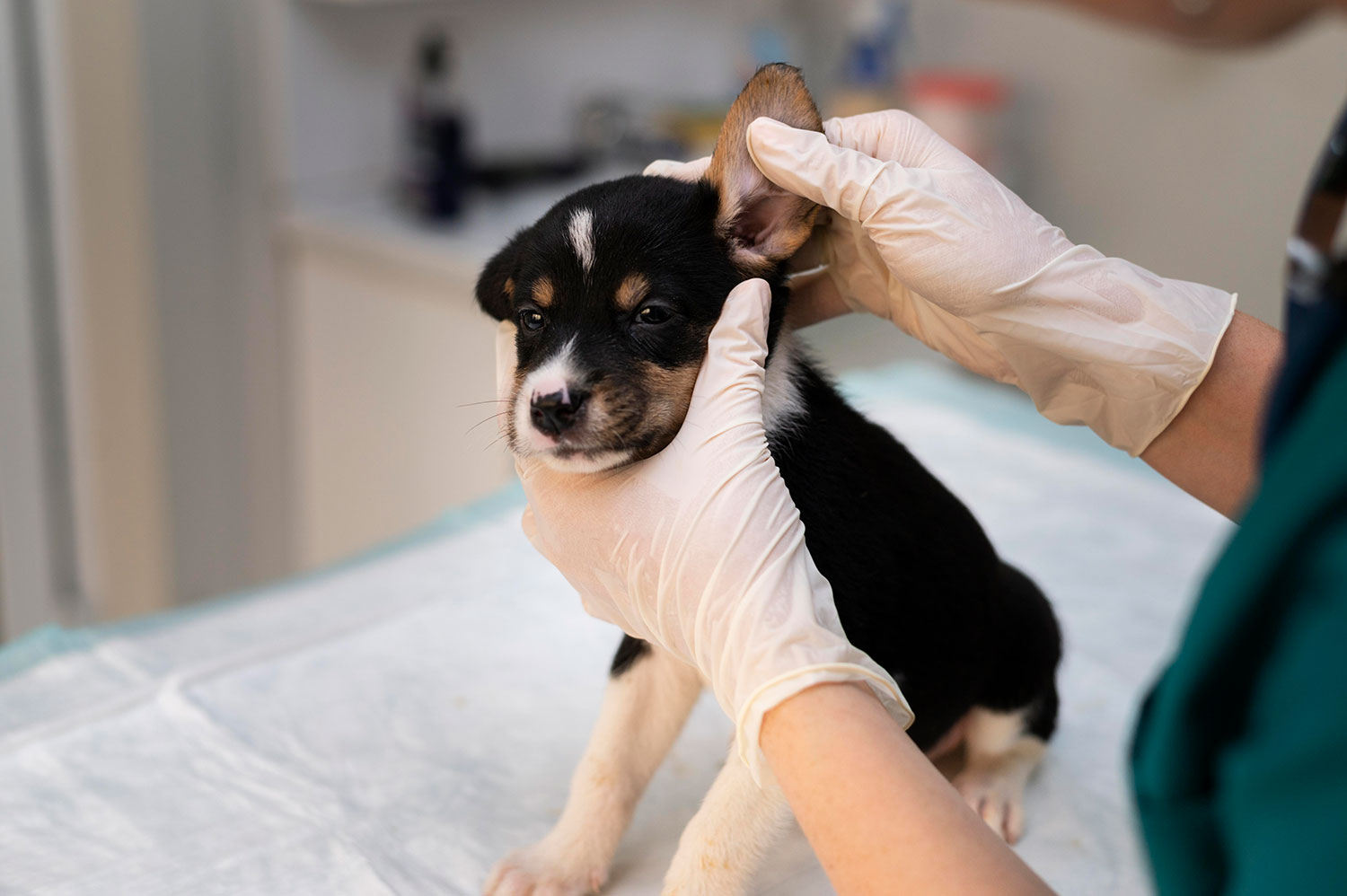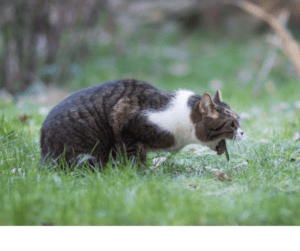Home » Pet Health » Pet Distemper » Dog Treatment and Prevention
Dog Treatment and Prevention

Canine Distemper is a disease in dogs primarily caused by the paramyxovirus. There is also evidence that this virus affects other wildlife animals, including coyotes, foxes, minks, skunks, ferrets, and more. It mainly targets the respiratory, nervous, and gastrointestinal systems.
In most cases, they can contract this virus through airborne particles due to sneezing and coughing of a nearby affected animal. Other than that, it can be transmitted by sharing equipment like food and water bowls, toys, and beddings.
Unfortunately, there is no discovered cure yet for Canine Distemper. Infected mothers can pass down the virus to their puppies in the placenta. Dogs will also shed the virus for a couple of months, which will infect more dogs, especially if they live close.
Treatment
Once your dog has a Canine Distemper diagnosis, it’s best to research the best treatments and support you can do to help them recover. This disease can be fatal if not addressed sooner. It is highly contagious as well, so any nearby dogs are at risk of contracting the virus.
Several dog distemper symptoms might occur, and it differs for everyone. Treatments usually include IV fluids to prevent dehydration due to constant vomiting and diarrhea. Antibiotics can also help strengthen the immune system, but it is not enough to kill the virus itself. The primary purpose is to treat and prevent secondary infections from worsening.
Shedding
Viral shedding is the way an infected dog releases the virus after the reproduction on the host, usually through feces and vomiting. In most cases, dogs shed the virus days or weeks before they start showing any signs of infection, making it easier to transmit to others. Shedding can last for up to four months during treatment and recovery, so it is essential to be careful when handling infected dogs.
They should go into quarantine from others, and you should clean their things with a bleach solution to make sure that it is disinfected.
Treatment at Home
Don’t ignore the symptoms after noticing that your dog is starting to show unusual behavior and signs of Distemper. Some of these might be eyes and nose secretion, vomiting, lethargy, and persistent coughing. The following are the most common indications of the virus, and you should start considering consulting your vet for a piece of medical advice.
Fever
Your dog can start having fevers. To treat this, use a cold compress and place it in the dog’s belly. You can also use a wet cloth soaked in cool water to bring down their body temperature. Try wrapping them with a towel, but only do it in the summer as a severe drop in temperature can be dangerous in the colder seasons.
Coughing
Be sure to always sweep and mop the floor to reduce dust and dirt buildup in the space. Avoid smoking near your dog, for secondhand smoke might worsen the state of their respiratory system. Use humidifiers to help with throat irritation.
It will also help if you stop using collars during recovery. If you need to walk them outside, you can use a harness instead.
Lack of Appetite
Serve wet food to the infected dog to encourage them to eat. Canine Distemper can make it harder for them to process kibbles and dry foods. Wet foods also have a higher water content, so that it will help with the constant shedding.
You can choose from various meals, but only bland foods, such as liver and chicken, should be given to them.
Nose and Eye
Another symptom of Distemper infection is the yellow secretions produced by the eyes and nose. You should clean them as much as possible and throw away the tissues and fabrics used. These discharges might contain the virus and have the possibility of getting transferred to other dogs.
Vomiting
After vomiting, try to restrict meals for a few hours. Only serve small portions of soft wet foods for them to try first. You can give them boneless and skinless chickens as well as cooked rice to sustain their energy.
Seizures and Tremors
If your dog suddenly experiences a seizure, do not move them during an episode. However, you should still be wary of possible dangers like sharp edges and stairs in the surroundings. They might urinate, drool, or defecate during a seizure, but it is all normal.
Call your vet immediately, even after the seizure is done, and your dog seems back to normal. Be calm and log in when it happens because you will need it when telling them the symptoms.
To help with the constant coughing, we recommend getting a humidifier for your home. This will control the atmosphere’s moisture and help your pets breathe cleaner and higher-quality air. The following are some of the best in the market today!
Better
Customer Rating – Four and a half stars
Pallas Humidifier
Advantages
- Quite
- Has 20-hour cycle
- It has a rotating nozzle
Downsides
- Weak design
Our Review:
The great thing about the Pallas humidifier is its 36—degree rotating nozzle that will cover the entire room. You don’t have to set it up frequently as well due to its 20-hour cycle, plus an ultra-quiet technology to keep you and your pets relaxed and undisturbed.
Better
Customer Rating – Four and a half stars
Pallas Humidifier
Advantages
- Quite
- Has 20-hour cycle
- It has a rotating nozzle
Downsides
- Weak design
Our Review:
The great thing about the Pallas humidifier is its 36—degree rotating nozzle that will cover the entire room. You don’t have to set it up frequently as well due to its 20-hour cycle, plus an ultra-quiet technology to keep you and your pets relaxed and undisturbed.
Good
Customer Rating – Four stars
Pure Enrichment Humidifier
Advantages
- It can be used as a nightlight
- It has a 1.5-liter water tank
- Auto-shutoff technology
Downsides
- Difficult to clean the tank
Our Review:
Pure Enrichment humidifier has a 1.5-liter tank to support its 16-hour operation of providing a humid and relaxing atmosphere. You can put it in the room where your dog stays most of the time, and it will surely help with their nasal irritation and help make them breathe smoother.
Treatment at the Vet
After your vet releases the Distemper diagnosis, there are several treatments that you can choose from to help your dog recover from the infection. It consists of IV fluids, anti-seizure medications for dogs with tremors and seizure episodes, and antibiotics.
Blood and plasma transfusion might be required alongside tube feeding and other advanced treatments available in your vet clinic for dogs with severe cases.
IV Fluids
The primary purpose of IV fluids is to replace the water released from the body due to severe vomiting and diarrhea. Dehydration is a severe matter for dogs because it can contribute to the fatal effects that might happen.
It is usually administered in a vein on the front leg just below the elbow. The IV can be inserted in the jugular vein in the neck and others nearby that area for critical patients.
Medications
Due to several symptoms a dog may show, there are also various medications your vet can prescribe to your dog. Anti-nausea medicines can reduce vomiting tendencies and encourage an increase in appetite. Antibiotics will help with swelling and if ever they somehow contracted secondary infections.
Others are based on the specific signs your dog is showing. They might also prescribe supplements that will help for complete recovery.
Advanced Therapies
Advanced therapies include blood and plasma transfusions as Canine Distemper can lead to anemia. The red blood cells should be replaced to encourage proper deoxygenation of the organs. Before the transfusion, your dog will be matched with a compatible donor first.
Feeding tubes are recommended for dogs who do not eat. Instead of stressing them more by forcing them to eat, they will insert this feeding equipment straight into the gastrointestinal tract. The tube will pass different entry points, such as the nose, esophagus, stomach, and upper small intestine.
Do not worry because your vet will guide you with the proper tube size and the overall process.
Prevention
Canine Distemper can be avoided by simply attending and keeping up with the vaccine schedule against the infection. It is best to take precautions because there is no cure for it yet. Fortunately, the vaccine is widely accessible in veterinary clinics. You can also decrease the risk of contraction by keeping your home and the nearby environment clean and always disinfected.
What is the Feline Distemper Vaccine?
The Canine Distemper vaccine has antibodies that protect every dog from contracting and developing bad symptoms from the disease. It contains a small amount of the virus so that the immune system will be introduced to it once injected into the dog. It allows the body’s natural defenses to act quickly if they somehow encounter the same virus in the future, decreasing the risk of severe cases.
Vaccination Schedule
Your veterinarian will be the one to give you the schedule of the vaccination. Typically, puppies need a series of vaccinations to build stronger immunity against the virus. Adult dogs need to keep up with their vaccination schedules as well.
On the other hand, the scenario varies for senior dogs. Most of them usually have different complications due to old age, which should be considered when receiving a vaccine shot.
As much as possible, avoid bringing unvaccinated dogs to dog parks and other places where they can catch several diseases and infections.
There are possible side effects of the vaccine, but the case is not the same for every dog. These are the things that may happen:
- Common reactions: lethargy, change in hair color, hair loss, fever, soreness, decrease in appetite, sneezing, and oral ulcers
- Moderate reactions: weight loss, hives, behavioral changes, respiratory disease, reduced milk production, and immunosuppression
- Severe reactions: anaphylaxis, arthritis, thyroiditis, myocarditis, seizures, abortion
If your dog shows any of these, you should contact your vet immediately or bring them to the nearest hospital.
Disinfect
Indoors
If you have a case of Distemper at home or in a shelter, it is necessary to put that dog in quarantine to prevent the spread of the virus. While cleaning and disinfecting the area, you should also put the animals in a different place as most cleaning agents can be toxic when ingested.
Reusable objects should be disinfected as well. Make sure to cover all the surfaces and dry them thoroughly before bringing back the dogs.
It would be best to scrub the surfaces to thoroughly remove the urine, feces, vomit, and other organic matter in corners and hard-to-reach areas. Rinse them first before using disinfectants for more effective cleaning.
You have two disinfectant options: quaternary ammonium compound (QAT) and bleach. Most homes have QUATs at home for disinfecting purposes, and they are also effective in eliminating the Distemper-causing virus. Some examples of this are benzalkonium chloride and dodecyl dimethyl ammonium chloride.
However, you should be careful when using these chemicals as they can cause burns. Use gloves, and be sure to wash your hands right away after using them.
The second disinfected is the bleach solution. You can purchase pre-made solutions in stores, but you can also make one at home. Mix 1 part of bleach to 30 parts water and apply it on contaminated surfaces. Let it sit for at least 10 minutes before rinsing. Be sure to wash the surfaces well, as it can cause ulcers and mouth irritation.
Outdoors
Canine Distemper is known to have the ability to survive in harsh environmental conditions and live for years even without a host. They can infect dogs from the plants, soil, grass, and other contaminated objects outdoors. You can disinfect the nearby outdoor areas from your house using the ones you already have at home.
Wash Your Hands
Regular hand washing can prevent many viruses and bacteria from spreading, so be sure to make it a habit. It is also essential to clean your hands or wear gloves when handling stools and cleaning vomit to prevent new host transmissions.
Clothing
After handling infected dogs, it is best to put your clothes directly into the washer or throw them away. The virus can contaminate fabric and use it as a carrier to infect other animals your might encounter. Be sure to disinfect them as well.
Determining Your Dog's Risk of Infection
The risk is higher in places where animals live close to each other such as shelters. Some even have more than one dog per kennel, which means sharing things like food and water bowls. It is necessary to disinfect kennels regularly and quarantine the infected dogs.
They should also get the correct dosage of the vaccine for a stronger immunity against the virus.
Top 5 Frequently Asked Questions
Yes! It is recommended to get every dog a Distemper vaccine starting from 6 to 8 weeks, followed in between 10 to 12 weeks, and then finally at 14 to 16 weeks. The booster shot is given at 12 months old and again three years after that.
Unfortunately, there is no cure for Distemper yet as of writing. However, there are available treatments and supportive care for infected dogs. Antibiotics help with secondary complications. There are also other medications to treat symptoms like seizures, excessive vomiting, and more.
Although the vaccine is primarily safe, some dogs might still experience side effects ranging from mild to severe. These are the ones you should watch out for:
- Allergic reactions: swelling, pain, redness, irritation, abscesses, and hard tissue forming on the injection site
- Systematic reactions: depression, loss of appetite, fever, weakness, lethargy
- Anaphylactic reactions: facial swelling, weakness, itching, difficulty in breathing, shock, diarrhea, and worst cases, death
Yes! Adult dogs are required to receive the vaccine every three years after the age of 1 year old.
The shedding process differs from one dog to another, but it can last for up to 4 months. Once the treatment starts, it will eventually reduce the shedding.
Other Frequently Asked Questions
There is a specific time interval for a series of vaccines, so it is essential to keep up with your dog’s schedule. It works by putting a small amount of the virus into the dog’s system to encourage the natural defenses to respond quickly if they ever re encounter it.
Blogs

How To Identify Normal Cat Poop From Worrisome Ones?
Your cat’s poop can tell you many things about its health. Its color, shape, consistency, size, content, and odor can

Hairballs in Cats: What Are They & What Are The Signs?
Hairballs are common in cats. This condition, known as trichobezoar, occurs when hair becomes stuck in the cat’s throat, digestive

Colitis in Cats: What You Should Know
Colitis is one of the many gastrointestinal disorders that affect cats. It is a condition in which the intestine becomes

